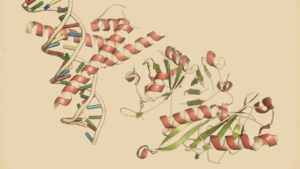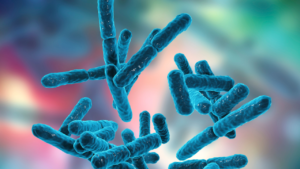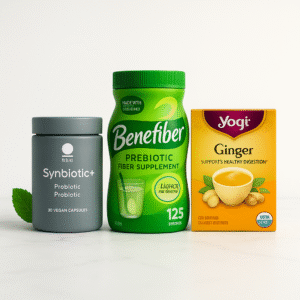Myths Busted: Impact of Diverse Dietary Fibers on Gut Health
Explore the impact of diverse dietary fibers on gut health. Learn about the benefits and effects of different fibers on gut microbiota.

The impact of diverse dietary fibers on gut health is a pivotal topic in nutrition science, exploring how various fibers influence our gut microbiota.
This relationship is key to understanding overall health, as a fiber-rich diet contributes significantly to gut microbiota diversity.
Dietary fibers, especially fermentable types, are crucial in producing short-chain fatty acids, beneficial compounds for gut health.
Additionally, the inclusion of whole grains in our diet has a profound nutritional impact on gut bacteria, underlining the importance of dietary diversity for optimal gut health and well-being.
Main Findings
- Studied the effect of 22 different dietary fiber sources on gut microbiota.
- Over 80% of the products were highly fermentable, inducing short-chain fatty acid (SCFA) production.
- Whole grain cereals had a similar effect on gut microbiota, boosting acetate and butyrate production and increasing bifidobacteria levels.
- The research helps understand the impact of diverse dietary fibers on gut health and potential health promotion through dietary fiber diversification.
Diverse Dietary Fibers on Gut Health
Dietary fiber is an essential component of our diet, mostly derived from plant-based foods.
It includes various substances like resistant oligosaccharides, non-starch polysaccharides, and resistant starches.
Its benefits, such as reducing the risk of heart disease, stroke, hypertension, obesity, diabetes, and certain cancers, are well-recognized ✅ Trusted Source
➤ Go to source
Definition and analysis of dietary fiber in grain products. In: Beta T, Camire ME, editors. Cereal Grain-Based Functional Foods. Croydon: CPI Group (UK) Ltd (2018). p. 103–26.
➤ Get "Smart Citations"
(hover to see more details)
✅ Trusted Source
➤ Go to source
Total dietary fiber (CODEX definition) in foods and food ingredients by a rapid enzymatic-gravimetric method and liquid chromatography: collaborative study, first action 2017.16. J. AOAC Int. (2019) 102:196–207.
➤ Get "Smart Citations"
(hover to see more details)
.
Various health authorities have set guidelines for fiber intake to promote overall health and mitigate chronic diseases.
For instance, the UK Scientific Advisory Committee on Nutrition recommends 30 g/day, the US Institute of Medicine suggests 14 g/1,000 kcal, and the European Food Safety Agency advises 25 g/day ✅ Trusted Source
➤ Go to source
Closing America's fiber intake gap: communication strategies from a food and fiber summit. Am J Lifestyle Med. (2016) 11:80–5.
➤ Get "Smart Citations"
(hover to see more details)
✅ Trusted Source
➤ Go to source
✅ Trusted Source
➤ Go to source
Scientific opinion on dietary reference values for carbohydrates and dietary fibre. EFSA J. (2010) 8:1462–77.
➤ Get "Smart Citations"
(hover to see more details)
.
Despite these recommendations, most adults in developed countries do not meet the suggested fiber intake due to various factors, including dietary habits and misperceptions about fiber sources ✅ Trusted Source
➤ Go to source
Closing America's fiber intake gap: communication strategies from a food and fiber summit. Am J Lifestyle Med. (2016) 11:80–5.
➤ Get "Smart Citations"
(hover to see more details)
✅ Trusted Source
➤ Go to source
30 g of fibre a day: An achievable recommendation? Nutrition Bull. (2015) 40:118–29.
➤ Get "Smart Citations"
(hover to see more details)
.
Dietary fiber plays a critical role in maintaining a healthy gut microbiota.
When dietary fibers reach the colon, they undergo fermentation by gut bacteria, influencing the gut's microbial composition and function ✅ Trusted Source
➤ Go to source
Fiber and prebiotics: mechanisms and health benefits. Nutrients. (2013) 5:1417–35.
➤ Get "Smart Citations"
(hover to see more details)
.
This process is essential for preventing conditions like gut dysbiosis, which is linked to various metabolic and autoimmune disorders ✅ Trusted Source
➤ Go to source
Antibiotics, pediatric dysbiosis, and disease. Cell Host Microbe. (2015) 17:553–64.
➤ Get "Smart Citations"
(hover to see more details)
✅ Trusted Source
➤ Go to source
Dysbiosis of the gut microbiota in disease. Microb Ecol Health Dis. (2015) 26:26191.
➤ Get "Smart Citations"
(hover to see more details)
.
Whole grains, vegetables, legumes, and fruits are primary dietary fiber sources.
The major cereals like wheat, rice, and maize, followed by oats, rye, barley, and others, are fundamental to our diet.
However, the consumption of pulses, another significant fiber source, has declined due to various factors, including changes in dietary preferences and production challenges in developing countries ✅ Trusted Source
➤ Go to source
Legacy of the international year of Pulses. Environ. Earth Sci. (2019) 78:124.
➤ Get "Smart Citations"
(hover to see more details)
✅ Trusted Source
➤ Go to source
Dietary guidance for pulses: the challenge and opportunity to be part of both the vegetable and protein food groups. Annals N Y Acad Sci. (2017) 1392:58–66.
➤ Get "Smart Citations"
(hover to see more details)
✅ Trusted Source
➤ Go to source
Pulses: an overview. J Food Sci Tech. (2017) 54:853–7.
➤ Get "Smart Citations"
(hover to see more details)
.
In addition to naturally occurring fibers, isolated and synthesized fibers are added to foods or consumed as supplements.
Prebiotics, a special type of fiber, are particularly beneficial as they are selectively used by beneficial gut microorganisms ✅ Trusted Source
➤ Go to source
Expert consensus document: the International Scientific Association for Probiotics and Prebiotics (ISAPP) consensus statement on the definition and scope of prebiotics. Nat Rev Gastroenterol Hepatol. (2017) 14:491–502.
➤ Get "Smart Citations"
(hover to see more details)
.
Studies on gut microbiota modulation by prebiotics have primarily focused on purified fibers and functional products, with less emphasis on common food sources.
To understand the impact of different dietary fibers on gut health, 22 fiber-rich foods were analyzed.
This study assessed the effects on gut microbiota activity and composition, including variations among individuals.
The inclusion of diverse and non-conventional fiber sources in this study broadens our understanding of how different dietary fibers can modulate human gut microbiota.
Exploring the Study: What Was Tested and How
A Closer Look at the Fiber Sources Used
These fibers were sourced from a variety of suppliers in 2019 and neatly categorized into five groups based on their origin.
Recognizing that most dietary fibers are typically cooked before consumption, our study replicated this by cooking the fibers using standard culinary techniques, thereby closely mirroring everyday food processing practices.
| Fiber group | Code | Plant source | Plant source details |
|---|---|---|---|
| Whole grain cereals [WG] | WG1 | Whole grain millet | Whole grain |
| WG2 | Whole grain cát | Whole grain | |
| WG3 | Medium grain whole | Whole grain | |
| WG4 | Non waxy whole grain soft | Whole grain | |
| WG5 | Whole grain barley | Whole grain | |
| WG6 | Whole grain corn | Whole grain | |
| WG7 | Waxy whole grain soft white | Whole grain | |
| WG8 | Waxy hulless barley | Whole grain | |
| Cereals | C1 | Oat beta-glucan | Oat Bran, Nordic Oats |
| (non-whole grain) | C2 | Rice fiber | Hull |
| Seeds [S] | S1 | Whole brown flaxseed | Whole seed |
| S2 | Hemp seed | Shelled hemp seed | |
| S3 | Psyllium fiber | Seed husk | |
| Pulses [P] | P1 | Whole brown lentils | Whole lentil |
| P2 | Soy fiber | Cell wall material of soybean cotyledon | |
| P3 | Pea fiber | Hull of yellow pea | |
| Other fibers [F] | F1 | Kiwi fiber | Gold Kiwi Fruit. Peeled |
| F2 | Inulin | Chicory root | |
| F3 | Bamboo fiber | Whole plant crushed | |
| F4 | Konjac flour | Root of tuber | |
| F5 | Apple fiber | Crushed apples | |
| F6 | Alçal beta glucan isolate | Euglena glacilis |
Breaking Down the Nutritional Content
These values include the dietary fiber content as reported by the suppliers.
To ensure accuracy, the McCleary method was used to cross-verified these figures, a recognized standard in fiber analysis ✅ Trusted Source
➤ Go to source
Development of an integrated total dietary fiber method consistent with the Codex Alimentarius definition. Cereal Foods World. (2010) 55:24–8.
➤ Get "Smart Citations"
(hover to see more details)
.
This verification was conducted in an ISO 17025 accredited laboratory, Eurofins Food Integrity Innovation, located in Madison, Wisconsin, United States.
Simulating Digestion: The Process Explained
An extensive in vitro gastrointestinal digestion process was conducted, following the protocols outlined in the European-framework COST Action Infogest ✅ Trusted Source
➤ Go to source
INFOGEST static in vitro simulation of gastrointestinal food digestion. Nature Protocols. (2019) 14:991–1014.
➤ Get "Smart Citations"
(hover to see more details)
, with certain modifications.
This process is crucial to our understanding of how different dietary fibers affect gut health, including their influence on gut microbiota and intestinal health.
Our research involved 15 out of 22 fiber products, chosen based on their combined protein, fat, and carbohydrate content exceeding 15% by weight.
These products underwent a comprehensive predigestion process, simulating the journey through the oral, gastric, and small intestinal phases, as per the methods proposed by Mackie et al. ✅ Trusted Source
➤ Go to source
InfoGest consensus method. Impact Food Bioactives Health. (2015) 13–22.
➤ Get "Smart Citations"
(hover to see more details)
.
Each product was ground into particles smaller than 2 mm and mixed with simulated salivary fluid.
This mixture included amylase and CaCl2, and was subjected to specific conditions for optimal simulation of the human digestive process, as detailed in our methodology ✅ Trusted Source
➤ Go to source
A standardised static in vitro digestion method suitable for food - an international consensus. Food Funct. (2014) 5:1113–24.
➤ Get "Smart Citations"
(hover to see more details)
.
The gastric phase involved adding simulated gastric fluid, adjusting pH, and incorporating porcine pepsin and lecithin.
Throughout this phase, pH levels were regularly monitored and adjusted.
The process then moved to the small intestinal phase, where pancreatin and bile salts were added, and the pH was adjusted to simulate duodenal digestion.
This was followed by a dialysis step, mimicking small intestinal absorption, using a specific dialysis membrane and conditions.
For one particular product, kiwi fiber, with high sugar content, a different approach was used.
It bypassed the gastrointestinal predigestion and was dialyzed through a 0.5-kDa membrane.
This variation in methodology highlights the importance of customizing the digestion simulation process based on the unique composition of each fiber product.
Key Discoveries: What the Study Found
Nutritional Profiles of Fiber-Rich Foods
These cereals uniformly contain proteins [10.9 ± 2.4%], fats [3.2 ± 1.6%], dietary fibers [12.5 ± 5.7%], sugars [0.6 ± 0.3%], and other carbohydrates [60.9 ± 8.1%], as detailed in Supplementary Table 1.
However, the story changes when we look beyond whole-grain cereals.
For instance, within non-whole grain cereals, we see a significant variation in fiber content.
Oat beta-glucan (C1) possesses a notably lower fiber percentage [65.0%] compared to rice fiber (C2), which boasts a fiber content of 93.1%.
This compositional diversity extends to the pulse group as well.
While soy fiber (P2) and pea fiber (P3) present a similar nutritional profile with proteins [8–12%], fats [1–1.1%], dietary fibers [75–82%], sugars [n.d.−0.1%], and other carbohydrates [n.d.−3%], whole brown lentils (P1) stand out with higher protein [24.6%] and other carbohydrates [50.6%] levels.
The seeds group also demonstrates notable differences.
For instance, whole brown flaxseed (S1) and hemp seed (S2) have the highest fat content [45.5 ± 4.7%] in this category.
In contrast, psyllium (S3) diverges from its seed counterparts with lower fat [0.8%] and protein [2.7%] levels but a significantly higher fiber content [97.1%].
Interestingly, when comparing dietary fiber levels indicated on product datasheets with those quantified by the McCleary method, a standard analytical technique, the results were generally consistent, showing less than a 20% variation.
A notable exception was found in the case of oat beta-glucan (C1), where the reported fiber content was 65%, yet the analyzed total fiber value stood at 33%.
How Different Fibers Affect Gut Health
A key finding is the distinct behavior of whole grain cereals in promoting healthy gut fermentation, as they are consistently grouped apart from the control condition [without fermentable substrates] in the PCA plot.
This suggests their similar fermentation capacity is beneficial for gut health.
In contrast, the response to other fiber sources showed more variability.
Oat β-glucan (C1) and whole brown lentils (P1) mirrored the positive effects of whole grains.
However, rice fiber (C2) exhibited poor fermentation, clustering close to the control and algal beta glucan isolate (F6).
Interestingly, pea fiber (P3) was found to significantly boost the production of beneficial gut compounds like acetate and propionate while inhibiting harmful ones [BCFA], with a notable increase in Bacteroidetes.
High-fat fibers like whole brown flaxseed (S1) and hemp seed (S2) showed a mixed pattern, falling between the control and whole grains in terms of their impact on gut microbiota.
Psyllium fiber (S3) stood out with its unique effect, primarily enhancing propionate production through Bacteroidetes fermentation.
The study also explored the effects of other fiber supplements like inulin (F2), which demonstrated strong fermentability, leading to significant lactate accumulation, BCFA inhibition, and a boost in Bifidobacteria and Lactobacilli.
Other fibers such as kiwi (F1), konjac flour (F4), and apple fiber (F5) showed more balanced effects, positioned between the extremes in the PCA plot.
Specific Impact on Gut Microbiota
Whole grain cereals, including varieties like whole grain millet, corn, and different types of wheat, significantly boost Bifidobacteria and Firmicutes.
Some, like whole grain oat and medium grain brown rice, particularly increase Bacteroidetes.
These whole grains collectively show a distinct pattern in the PCA plot, indicating their unique impact on gut health.
In contrast, non-whole grain cereals, particularly oat beta glucan (C1), also enhance Bifidobacteria, Lactobacilli, and Firmicutes, resembling the effects of whole grains.
However, rice fiber (C2) tends to increase Bacteroidetes, aligning more closely with the control group in terms of its impact.
Seeds, such as psyllium fiber, exhibit a varied influence.
While not significantly altering bifidobacteria or lactobacilli levels, they notably boost Firmicutes, especially psyllium fiber, which also greatly affects Bacteroidetes due to its high-fat content.
The pulse group, including whole brown lentils and pea fiber, shows a strong increase in all four bacterial groups, positioning them uniquely in the PCA plot.
Soy fiber, however, primarily influences Bacteroidetes.
The other fiber group presents even more diversity.
Kiwi fiber and inulin notably increase Bifidobacteria, Lactobacilli, and Firmicutes, with inulin having a pronounced effect on lactobacilli.
Bamboo fiber and algal beta glucan isolate exhibit milder effects, leaning closer to the control group in the PCA plot.
Konjac flour and apple fiber fall in between, each with their specific impacts on gut bacteria.
Certain fibers like medium grain whole brown rice, waxy hulless barley, whole brown lentils, and inulin significantly elevate the Firmicutes/Bacteroidetes ratio compared to the control, as shown in Psyllium fiber, on the other hand, reduces this ratio due to its strong impact on Bacteroidetes.
Fermentability of Various Fibers and Their Health Implications
Whole grains and pulses (legumes) were observed to induce the most significant drop in pH and increase in gas production.
Compared to the control group, whole grains led to a pH decrease of about 0.5 units and a gas pressure increase of approximately 50.6 kPa.
Pulses showed a similar trend.
Notably, inulin (F2) showed the highest impact in these areas, whereas hemp (S2) and rice fiber (C2) had the lowest effects on pH and gas production, respectively.
Regarding lactate levels, an overall increase was noted across all fiber types, with an average concentration of 5.5 mM.
Specifically, whole grain products led to the highest net acetate levels, although with notable variability within the group.
When it comes to total SCFAs, all fiber groups showed an increase compared to the control, with whole grains leading the way.
The patterns for acetate mirrored this trend, with inulin and bamboo fiber showing the highest and lowest levels, respectively.
Similarly, propionate levels generally increased with fiber supplementation, particularly with seeds and pea fiber (P3), which induced the highest rise.
Bamboo fiber (F3), in contrast, had a minimal impact on propionate production.
Butyrate levels also tended to increase with fiber supplementation, yet this was not always significant due to variability among individuals.
When excluding data from a donor with low butyrogenic potential, whole grains, especially whole grain millet (WG1), oat (WG2), and medium grain brown rice (WG3), significantly increased butyrate production.
Oat beta-glucan (C1) within the non-whole grain cereal group also induced butyrate production.
However, other groups or individual products did not have a significant effect on butyrate levels.
Branched fatty acids (BCFA) levels remained largely unchanged by various fibers, except for inulin, which reduced BCFA levels compared to the control.
Discussion: What These Findings Mean for Your Health
This study delves into the effects of 22 different fiber-rich food sources on the gut microbiota of three healthy human donors, conducted in vitro.
The majority of these products, 19 out of 22, were quickly fermented, positively influencing gut microbiota by increasing the production of health-promoting short-chain fatty acids (SCFA) and benefiting key bacterial groups like Bifidobacteria and Lactobacilli.
However, three products showed resistance to bacterial degradation and had minor impacts on the microbiota.
The research spanned a variety of fiber sources, including whole grains, non-whole grain cereals, seeds, pulses, and other fibers.
Notably, whole grain products consistently increased acetate, lactate, and propionate levels and stimulated Bifidobacteria and Lactobacilli growth.
They primarily fueled Firmicutes, with Bacteroidetes less affected.
This aligns with previous human studies indicating whole grains' impact on fecal microbes, including Bifidobacteria and Lactobacillus enhancement ✅ Trusted Source
➤ Go to source
Does whole grain consumption alter gut microbiota and satiety? Healthcare. (2015) 3:364–92.
➤ Get "Smart Citations"
(hover to see more details)
✅ Trusted Source
➤ Go to source
The effects of intact cereal grain fibers, including wheat bran on the gut microbiota composition of healthy adults: a systematic review. Front Nutrition. (2019) 6:33.
➤ Get "Smart Citations"
(hover to see more details)
.
While whole grain effects on SCFA concentrations in feces are inconsistent ✅ Trusted Source
➤ Go to source
Substituting whole grains for refined grains in a 6-wk randomized trial has a modest effect on gut microbiota and immune and inflammatory markers of healthy adults. Am J Clin Nutr. (2017) 105:635–50.
➤ Get "Smart Citations"
(hover to see more details)
✅ Trusted Source
➤ Go to source
The role of dietary fibre in modulating gut microbiota dysbiosis in patients with Type 2 diabetes: a systematic review and meta-analysis of randomised controlled trials. Nutrients. (2020) 12:3239.
➤ Get "Smart Citations"
(hover to see more details)
, their impact on portal SCFA levels is significant ✅ Trusted Source
➤ Go to source
Quantification of the absorption of nutrients derived from carbohydrate assimilation: model experiment with catheterised pigs fed on wheat-or oat-based rolls. Br J Nutr. (2000) 84:449–58.
➤ Get "Smart Citations"
(hover to see more details)
✅ Trusted Source
➤ Go to source
Microbial degradation of whole-grain complex carbohydrates and impact on short-chain fatty acids and health. Adv Nutr. (2015) 6:206–13.
➤ Get "Smart Citations"
(hover to see more details)
.
Interestingly, most dietary fiber research has focused on common grains like wheat, barley, or rice, or purified products like Arabinoxylans or inulin.
This study expands on that, exploring the effects of less common fibers like waxy cereals and millet.
Whole grains, due to their diverse fiber types and other microbe-accessible components, have a significant impact on gut microbiota.
The study also highlights that lactate, particularly induced by whole grains, has beneficial effects on gut health, inhibiting pathogenic bacteria and serving as a substrate for other beneficial bacteria ✅ Trusted Source
➤ Go to source
Lactate-utilizing bacteria, isolated from human feces, that produce butyrate as a major fermentation product. Appl Environ Microbiol. (2004) 70:5810–7.
➤ Get "Smart Citations"
(hover to see more details)
.
Butyrate, another key metabolite influenced by dietary fibers, is crucial for colon health and inflammation prevention ✅ Trusted Source
➤ Go to source
Potential beneficial effects of butyrate in intestinal and extraintestinal diseases. World J Gastroenterol. (2011) 17:1519–28.
➤ Get "Smart Citations"
(hover to see more details)
✅ Trusted Source
➤ Go to source
Short Chain Fatty Acids (SCFAs)-mediated gut epithelial and immune regulation and its relevance for inflammatory bowel diseases. Front Immunol. (2019) 10:1486.
➤ Get "Smart Citations"
(hover to see more details)
.
Oat β-glucan, despite its high fiber content, showed effects similar to whole grain cereals.
These β-glucans also found in wheat and barley, suggest a common beneficial mechanism through soluble fiber.
In contrast, rice fiber, bamboo fiber, and algal beta glucan isolate, rich in soluble or insoluble fiber, showed the lowest fermentability.
Interestingly, bamboo shoot fiber has shown obesity-prevention potential in mice studies ✅ Trusted Source
➤ Go to source
Bamboo shoot fiber prevents obesity in mice by modulating the gut microbiota. Sci Rep. (2016) 6:32953.
➤ Get "Smart Citations"
(hover to see more details)
.
Psyllium fiber, with similar fiber levels, had a distinct effect, especially in promoting Bacteroidetes and propionate production.
The study also underscores the interindividual variability in gut microbiota responses to dietary fibers.
Cantu-Jungles and Hamaker's classification of dietary fibers based on specificity to gut microbes ✅ Trusted Source
➤ Go to source
New view on dietary fiber selection for predictable shifts in gut microbiota. Mbio. (2020) 11:e02179–19.
➤ Get "Smart Citations"
(hover to see more details)
highlights this variability.
The research supports the idea that a diverse plant-based diet, including various cereals, could benefit gut microbiota diversity and health ✅ Trusted Source
➤ Go to source
American gut: an open platform for citizen science microbiome research. Msystems. (2018) 3:18.
➤ Get "Smart Citations"
(hover to see more details)
.
While the study found consistent trends across donors, limitations include the small number of donors and the in vitro setup.
Future research should include multiple fibers and human-derived disease-dysbiotic microbial communities for a more comprehensive understanding.
The study also emphasizes the potential of dietary interventions to promote gut homeostasis and health, particularly through Bifidobacteria stimulation by diverse fiber sources.
Despite limitations like the short-term, static condition evaluation, and less comprehensive microbiota analysis (qPCR), the study's in vitro approach minimizes external variables and directly assesses fiber effects on gut microbiota.
This expands our understanding of fiber's role in gut health and offers potential directions for dietary recommendations and interventions.
FAQs
Review date not set.
How we reviewed this article:
Latest on:





